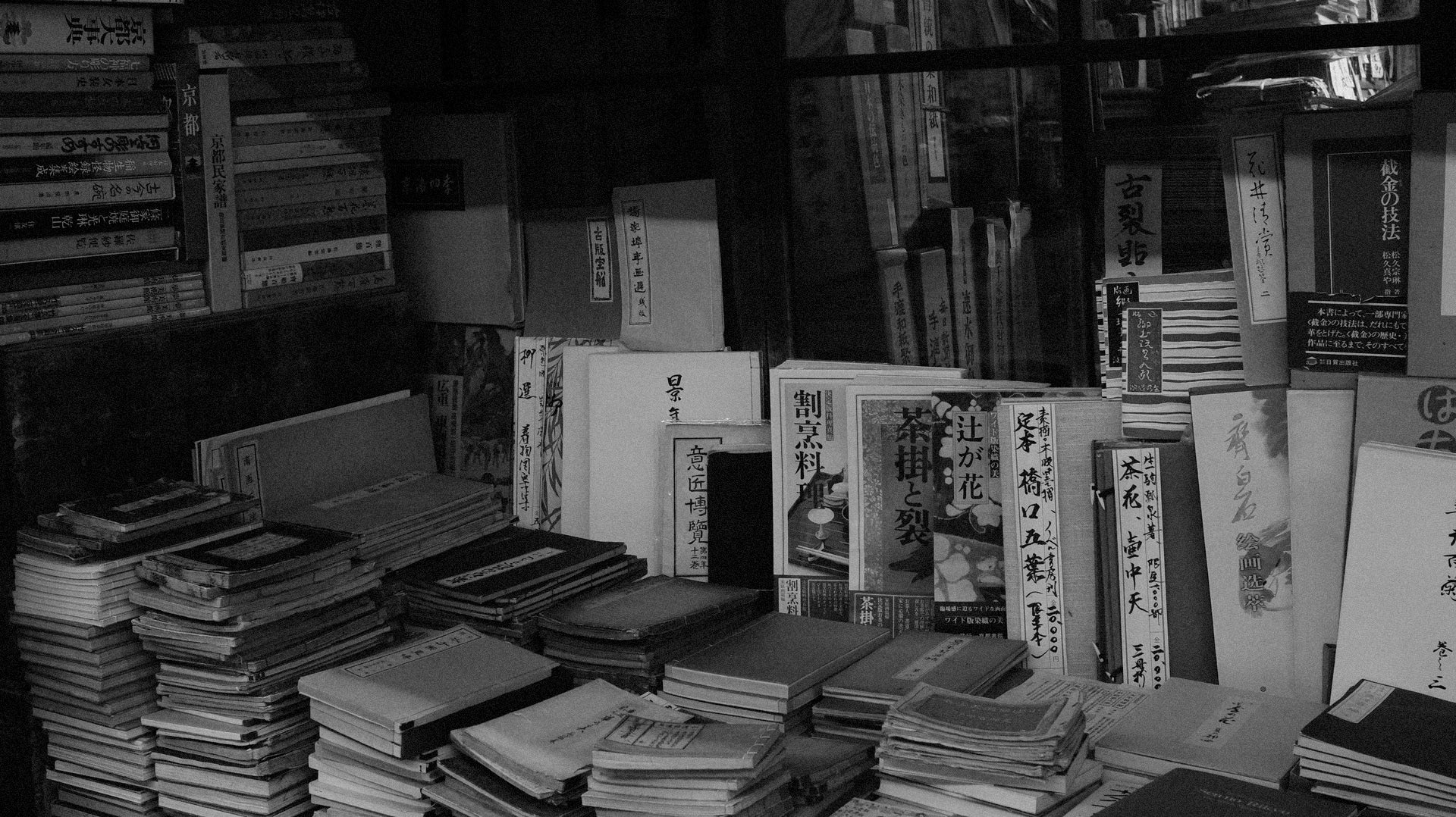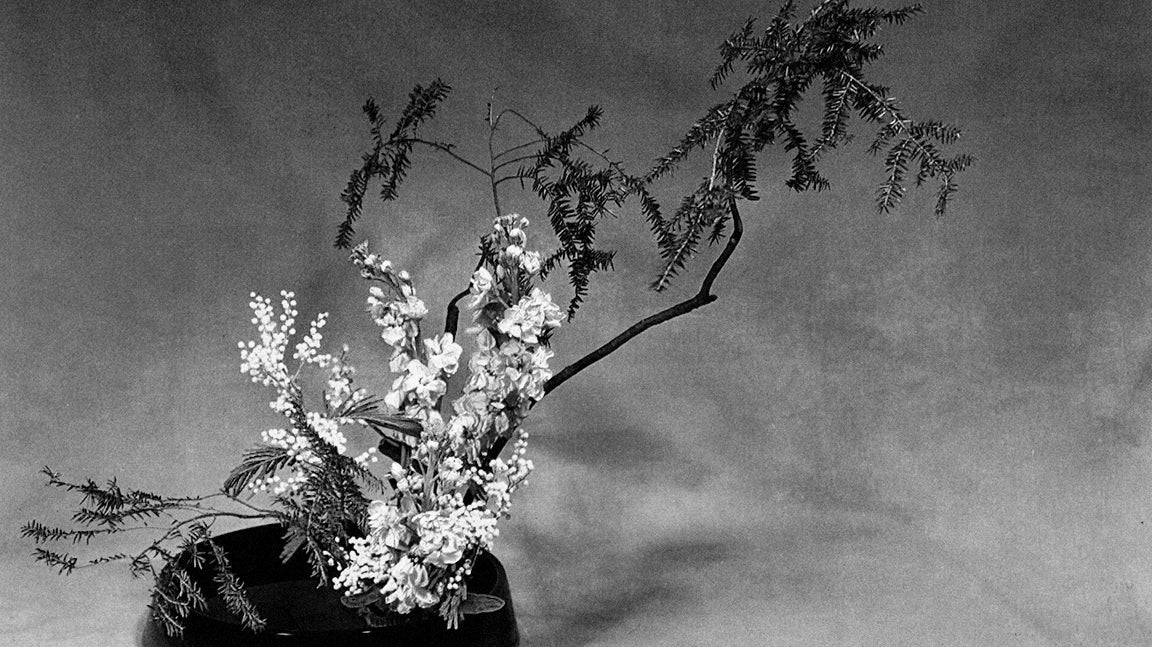
The Japanese tea ceremony, known as chadō or chanoyu. Photo courtesy of Aman Kyoto.
(Japanese Tea Ceremony: The Philosophy of "One Encounter, One Chance" - dans le gris)
The Japanese tea ceremony, known as chadō (茶道), means "the way of tea," or chanoyu (茶の湯), which literally translates to "hot water for tea." It is a traditional ritual rooted in Japanese culture and aesthetics, often involving the ceremonial preparation and presentation of matcha. The procedure for this preparation is called temae (点前). The Japanese tea ceremony usually takes place in a small tea room or a special tea house, built to fit just four or five people and often designed like a hermit's hut. During the tea ceremony, participants take a break from everyday life. In addition, the process of preparing and enjoying matcha, the powdered green tea central to the ceremony, is a choreographed art that takes many years of dedicated study to master.
(Japanese Tea Ceremony: The Philosophy of "One Encounter, One Chance" - dans le gris)
Brief History of the Japanese Tea Ceremony
Speaking of the origins of the Japanese tea ceremony, it's interesting to note that tea-drinking began in China, with its discovery credited to the Indian sage Bodhidharma, also known as Daruma, the founder of Chan Buddhism, a precursor of Zen Buddhism. From as early as the 2nd century BCE, Buddhist monks started drinking tea to aid their meditation practices and stave off sleep. The first known documentation of tea in Japan dates to the 9th century, said to be introduced by Buddhist monks and envoys who brought tea back upon their return from China.
In Japan and other parts of East Asia, tea-drinking became an esteemed activity by the 13th century CE, with aristocrats adopting it as a means to showcase their cultural refinement. The practice evolved to include specifically designed tea rooms, meticulously landscaped gardens, and exquisite porcelain, transforming tea-drinking into not just a cultural experience, but also nothing less than an art form.
Actually, "The Japanese tea ceremony" is not an appropriate translation of chanoyu or chadō, as it implies a certain formality that tea connoisseurs wish to avoid. At the core of chadō, there are four key principles: harmony (和), respect (敬), purity (清), and tranquility (寂). These principles, set forth in the 16th century by Sen no Rikyū, a highly respected tea master and the father of the wabi-cha style of tea ceremony, remain central to chadō practices today. Furthermore, Rikyu played a crucial role in refining and formalizing the ceremony, infusing it with principles rooted in Zen Buddhism and the aesthetics of Wabi Sabi.
Historically, the ritualistic tea ceremony has been widely practiced across East Asia. However, while China later favored steeping loose-leaf teas as the mainstream method, Japan continued to perfect the ceremonial tea ritual of preparing matcha. In 1872, the Japanese tea ceremony was officially recognized by the Japanese government as a form of art with significant cultural importance.
(Japanese Tea Ceremony: The Philosophy of "One Encounter, One Chance" - dans le gris)
The Philosophy of the Japanese Tea Ceremony
Omotenashi is a Japanese concept closely associated with the Japanese tea ceremony, but what does it actually mean? Omotenashi, rooted in Japanese culture, embodies the spirit of wholeheartedly looking after guests. If you've traveled in Japan, you might have experienced omotenashi hospitality firsthand. Though hard to explain, it goes beyond mere friendliness. The key elements of omotenashi include paying attention to small details, anticipating the needs of others, and going above and beyond to meet them. It's about creating an environment where guests feel genuinely welcomed, valued, and cared for.
Therefore, Omotenashi is also an essential part of the Japanese tea ceremony. In the Japanese tea ceremony, the host's focus is entirely on the guest, with gestures and movements designed to convey respect, warmth, and sincerity. The tea master Sen no Rikyū played a significant role in establishing the concept of Omotenashi. He expressed the term "Ichigo Ichie" (一期一会), which describes the concept of treasuring the unrepeatable nature of a moment. In English, it might translate as "One Encounter, One Chance." This term reminds people to cherish any gathering they may take part in, emphasizing that each moment in life cannot be repeated. Therefore, for the host, this sincerity demands extensive preparation to ensure an unforgettable experience for each guest.
It is also important to know that traditional tearooms, known as chashitsu, are often small, simple, and made from natural materials like wood and paper. They are mostly located in the gardens or grounds of private Japanese homes, parks, museums, or temples. The door of the traditional tearoom, which is quite low and square, separates the quiet tea space from the bustling outside environment. This small door means that people of any social status or rank have to bend and crawl through it to enter. This act symbolizes the shedding of ego and pride before participating in the tea ceremony and reminds everyone to approach the ritual with a humble and respectful attitude.
(Japanese Tea Ceremony: The Philosophy of "One Encounter, One Chance" - dans le gris)

The tea bowl used in the Japanese tea ceremony, often crafted in an irregular, asymmetrical form, embodies the concept of Wabi Sabi. Photo via Pinterest.
(Japanese Tea Ceremony: The Philosophy of "One Encounter, One Chance" - dans le gris)
And the last philosophy we have to mention is Wabi Sabi. The Japanese tea ceremony is a perfect manifestation of Wabi Sabi. In the "Southern Record" (1690), a collection of sayings by the tea master Sen no Rikyū, it is expressed that "In the small tea room, it is desirable for every utensil to be less than perfect. There are those who dislike a piece when it is even slightly damaged; such an attitude shows a complete lack of comprehension." The tools used in the tea ceremony, such as the tea bowls, are chosen for their rustic beauty and natural imperfections. This statement illustrates that minor imperfections have often been considered more valuable. Moreover, as we mentioned before, the traditional tearooms are normally constructed by natural materials, and the decoration or ikebana for the interior often incorporates seasonal flowers and natural elements that reflect the time of year. These embody the philosophy and aesthetics of Wabi Sabi, embracing the beauty of nature's fleeting moments.
Procedures of the Japanese Tea Ceremony
Although the specific actions of a tea ceremony may vary slightly among different schools, there are several commonalities. A complete, formal Japanese tea ceremony typically spans several hours, commencing with a kaiseki course meal, followed by a serving of thick tea, and concluding with thin tea. However, modern tea ceremonies are often abbreviated, focusing solely on the enjoyment of thin tea. Below, we will outline the brief procedures to help you understand the essence of the Japanese tea ceremony.
As a guest, remember to avoid being too fancy or fashionable. It is better to wear modest clothes and remove jewelry that may damage the tea equipment. It is important to note that strong perfumes should be avoided, as they can distract from the tea experience.
Traditionally, Japanese tea ceremony venues are often surrounded by gardens, though many modern venues do not have one. When guests attend a tea ceremony, they wash their hands and rinse their mouths in a stone basin (known as a tsukubai) before entering the tearoom.
The Japanese tea ceremony is traditionally held in a tatami room. The entrance for guests is sometimes kept low so that entering guests have to bend over, symbolizing humility. In the tea room, the emphasis is on the interaction between the host, guests, and tea utensils. When the host enters the room and bows, the guest bows back to show humility and respect.
Once guests have taken their positions, they can observe the carefully selected decorations for the occasion. The host selects a set of utensils specific to the gathering and uses them to perform the tea preparations in front of the guests. The exact movements of the host are vital but depend on which school of tea ceremony one favors. The important thing is to make only the minimum of movements, which should be precise, graceful, and restrained. Furthermore, one should remain silent while actually preparing the tea.
The tea bowl is positioned on the tatami mat in front of you, facing towards you. As a gesture of respect to the host, guests are expected to lift the bowl. Hold it with your right hand and support it with your left palm. Using your right hand, rotate it clockwise by approximately 90 degrees, changing its orientation so that its front no longer faces you. The tea should be sipped in small sips.
(Japanese Tea Ceremony: The Philosophy of "One Encounter, One Chance" - dans le gris)
Read More Lifestyle Articles:
• Wabi Sabi Interior Design: Principles, Design Ideas, and Inspiration
• Minimalist Interior Design: Key Principles and What You Need to Know
• Ma: The Japanese Aesthetic of Negative Space and Time
• What is Wabi Sabi? Embracing the Beauty of Imperfection
(Japanese Tea Ceremony: The Philosophy of "One Encounter, One Chance" - dans le gris)
About Us
Dans Le Gris is a brand that began with everyday jewelry, with each handmade piece designed and crafted in Taiwan. We deeply value every detail, dedicating ourselves to creating timeless pieces through collaboration with experienced craftsmen.
In our journal, we provide irregular updates featuring articles about art, culture, and design. Our curated content encompasses diverse aspects of life, with the aspiration to offer meaningful insights and inspiration.
Shop Now
↪ Follow us for more updates: YouTube | Instagram








Comments
Informative and delightful article. Thank you!